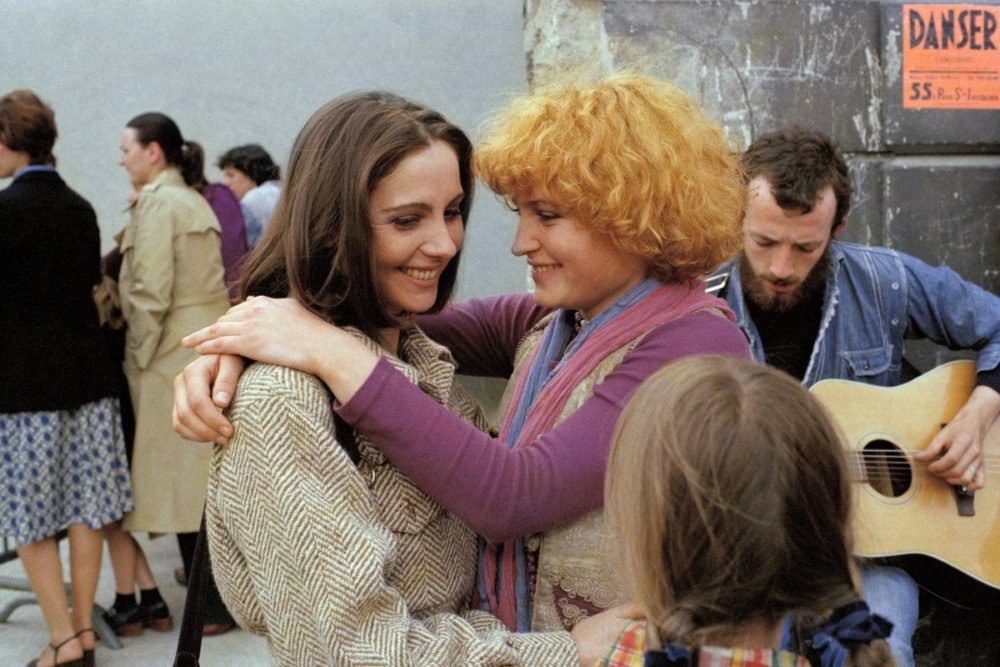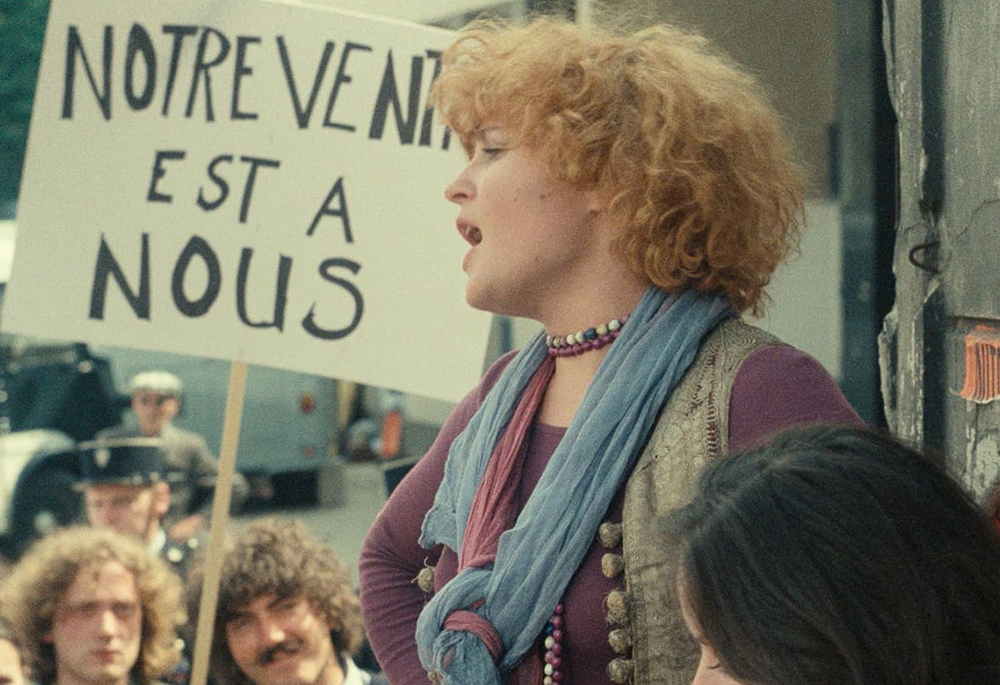Eu
ouvi falar pela primeira vez sobre o filme “Zardoz” (2974), estrelando Sean
Connery, quando foi exibido numa sessão da meia-noite no Festival de Cinema do
TCM em 2017. Estas sessões da meia-noite são eventos divertidos que exibem
aqueles filmes que de tão ruins, chegam a ser bons. Na ocasião, uma das cinéfilas
presentes até trouxe biscoitos de Zardoz para a plateia. Eu não tinha biscoitos
para comer quando assisti a Zardoz, mas certamente tive uma experiência
interessante.
I first heard about the movie “Zardoz” (1974), starring Sean Connery, when it was shown in a midnight screening at the TCM Film Festival in 2017. These midnight screening are fun-filled events showcasing so-bad-it’s-good movies. At the occasion, a film fan even brought Zardoz cookies for the audience. I had no cookies when watching “Zardoz”, but I certainly had an interesting experience.
Um ser imortal. Um Deus falso por ocupação e um ilusionista por inclinação. Este é
Arthur Frayn (Niall Buggy), que vive em uma imensa cabeça flutuante – Zardoz –
que dá ordens a soldados parcialmente vestidos e depois vomita armas. Arthur é
assassinado pelo exterminador Zed (Sean Connery), que então vai para o Vortex,
um local mítico onde todos podem controlá-lo com um único olhar.
An immortal being. A fake God by occupation and a magician by inclination. This is Arthur Frayn (Niall Buggy), living in a huge floating head – Zardoz – that gives orders to barely-dressed soldiers and then vomits guns. Arthur is killed by the exterminator Zed (Sean Connery), who then goes to the Vortex, a mythical place where everybody can control him with only one look.
No
Vortex, onde as pessoas comem pão verde, Zed permanece para ser estudado por
May (Sara Kestelman), que está pesquisando sobre sexualidade humana. Ele fica
lá apesar dos protestos de Consuella (Charlotte Rampling), que sabe que “o
monstro”, que é como se referem a Zed, causará muitos desentendimentos. A May
são dados sete dias para concluir sua pesquisa, e depois disso Zeb será
sacrificado. Mas ele tem uma missão muito maior a cumprir.
At the Vortex, where they eat green bread, Zed stays to be studied by May (Sara Kestelman), who is researching about human sexuality. He stays despite Consuella’s (Charlotte Rampling) protests, as she knows that “the monster”, as they call Zed, will cause a lot of disagreements. May is given seven days to conclude her research, and after that Zed will be sacrificed. But he has a much bigger mission to accomplish.
Há
infelicidade no Vortex porque não existe a morte. Envelhecer é uma punição e as
pessoas ou ficam apáticas ou vivem como boêmios sofredores. Zed pode ser o
salvador deles, fazendo uma conexão bem óbvia entre Zardoz e O Mágico de Oz.
There is unhappiness in the Vortex because there is no death. Aging is a punishment and the people either become apathetic or live as suffering bohemians. Zed may be their savior, as he makes a quite obvious connection between Zardoz and The Wizard of Oz.
“Zardoz”
se passa no ano 2293. A ficção científica tem sido desde os anos 1950 uma área
perfeita para a imaginação fluir livremente, mesmo em filmes de baixo
orçamento. Na época, mais e mais pessoas se convenceram de que podiam fazer
filmes, sendo diretores, atores ou acumulando funções. A paixão pelo cinema fez
com que pessoas deixassem de ser meros espectadores e se tornassem cineastas –
veja, por exemplo, o inesquecível Ed Wood. “Zardoz” é um descendente direto do
cinema de Wood.
“Zardoz” is set in the year 2293. Science fiction had been since the 1950s a perfect area for the imagination to flow freely, even in B-movies. At that time, more and more people believed they could make films, as directors, actors or multi-hyphenates. The passion for film made people stop being only spectators and converted them into filmmakers – see, for instance, the unforgettable Ed Wood. “Zardoz” is a direct descendant of Wood’s cinema.
Mas
há uma coisa bacana que podemos encontrar mesmo nos piores filmes de ficção
científica: geringonças legais. Em “Zardoz” todo mundo do Vortex tem um anel
que fala, responde a perguntas e projeta hologramas. Descobrimos com uma
simples busca no Google que companhias da área de tecnologia já estão fazendo “smart
rings”, ou anéis digitais. Tais objetos servem para medir estatísticas de saúde,
como padrões de sono, ritmo cardíaco, nível de estresse e temperatura corporal.
But one nice thing we can find even in the worst sci-fi movies are the cool gadgets. In “Zardoz” everybody in the Vortex has a ring that talks, answers questions and projects holograms. We learn from one simple Google search that tech companies are already making “smart rings”. Such gadgets serve to measure health statistics, such as sleep pattern, cardiac rhythm, stress level and body temperature.
Sean
Connery teve dificuldades para encontrar bons papéis depois de anos
interpretando James Bond. Aqui, ele está ou usando o uniforme ridículo dos
exterminadores ou disfarçado de noiva! Sua sorte só iria mudar em meados dos
anos 80, com “O Nome da Rosa” – pelo qual ele ganhou um Bafta – e “Os
Intocáveis” – que lhe rendeu um Oscar. A outra protagonista de “Zardoz”,
Charlotte Rampling, não estava tentando se aventurar em papéis diferentes, mas
fez o filme porque se tratava de “poesia. Ele claramente declara: ame seu
corpo, ame a natureza, e ame sua origem”.
Sean Connery had difficulty finding good roles after his James Bond years. Here, he is either wearing the ridiculous exterminator uniform or is disguised as a bride! His luck would only change in the mid-80s, with “The Name of the Rose” – for which he won a Bafta – and “The Untouchables” – that gave him an Oscar. The other “Zardoz” lead, Charlotte Rampling, was not trying to venture into different roles, but did the film because it was “poetry. It clearly states: love your body, love nature, and love what you come from”.
O
filme foi escrito, produzido e dirigido por John Boorman. Ele fez grande
sucesso em 1972 com “Amargo Pesadelo” e depois tentou filmar uma adaptação da
saga de O Senhor dos Anéis, e foi durante a preparação para este filme
cancelado que ele começou a escrever “Zardoz”. Ultraconfiante, Boorman definiu
sua criação como “mais perto da melhor literatura de ficção científica que é
mais metafísica. A maioria da ficção científica que dá um mau nome ao gênero é
de histórias de aventuras em trajes especiais”.
The movie was written, produced and directed by John Boorman. He had a big hit in 1972 with “Deliverance” and then had tried to film an adaptation of the Lord of the Rings saga, and it was during the preparation for his aborted movie that he started writing “Zardoz”. Über-confident, Boorman defined his creation as “closer to the better science fiction literature which is more metaphysical. Most of the science fiction that gives the genre a bad name is adventure stories in space clothes”.
Faz
muito sentido quando descobrimos que John Boorman confessou ter usado drogas
enquanto escrevia e dirigia várias cenas do filme. Também faz sentido que o
figurino hediondo tenha sido desenhado pela esposa de Boorman, Christel Kruse,
e não um estilista profissional. Um filme com status de cult, mas ao qual eu
não quero assistir de novo: como eu o considerei longo demais e às vezes sem
sentido, estou feliz por finalmente riscar “Zardoz” da minha lista – com ou sem
biscoitos.
It makes
a lot of sense when we learn that John Boorman confessed he used drugs while
writing and directing several scenes in the movie. It also makes sense that the
infamous costumes were made by Boorman’s wife, Christel Kruse, not a
professional stylist. A film with a cult following, but one I don’t want to
watch again: as I felt it to be too long and sometimes pointless, I’m happy to
say I’ve experienced “Zardoz” – with or without cookies.
This is
my contribution to the Sixth So Bad It’s Good Blogathon, hosted by Rebecca at Taking Up
Room.


/media/movies/covers/2017/02/21e84306317611fab2cdd45615805721.jpg)
/media/movies/covers/2009/10/5cf6516e305fa3240db9400bde56a8d8.jpg)



.jpg/220px-John_Boorman_(1974).jpg)












